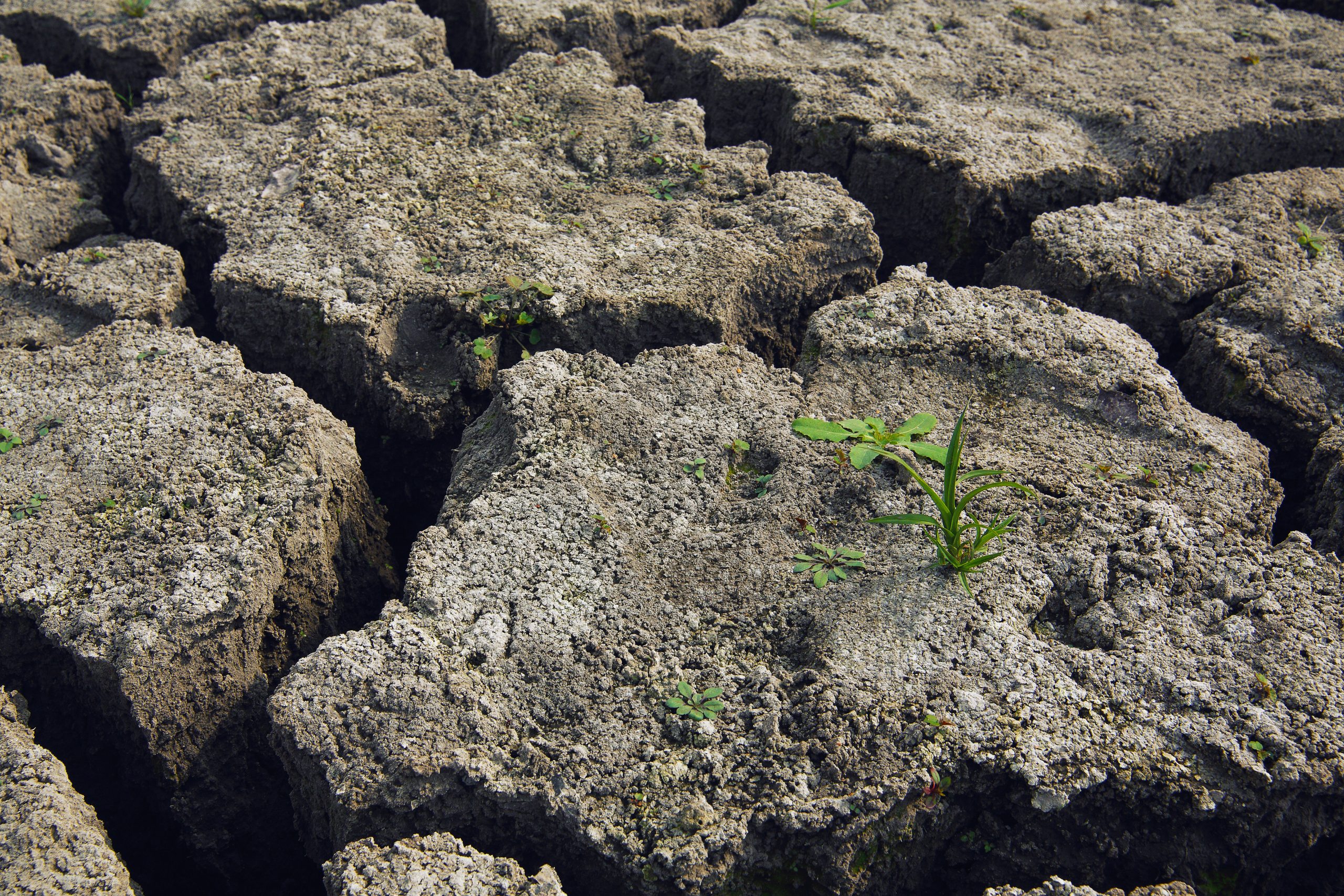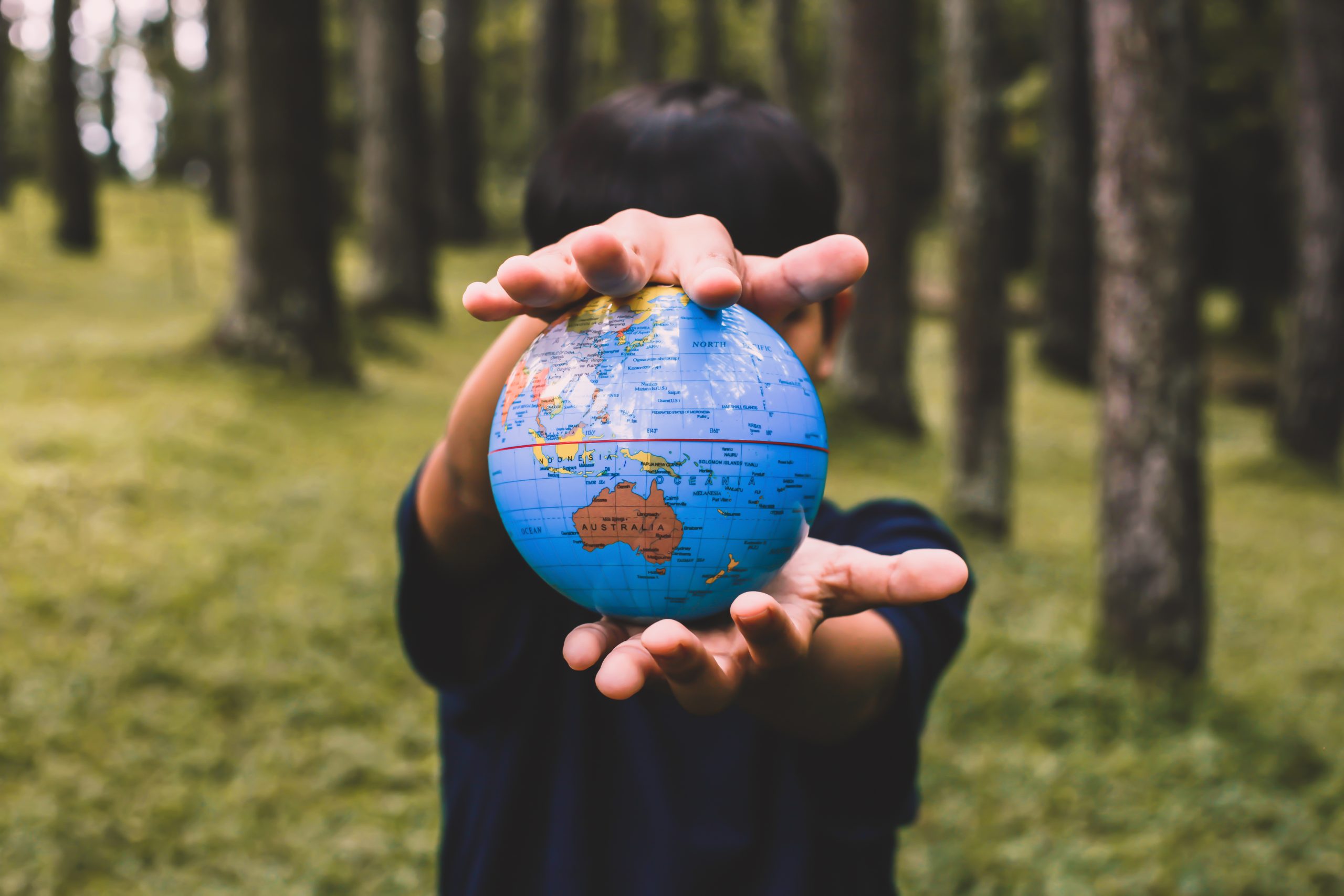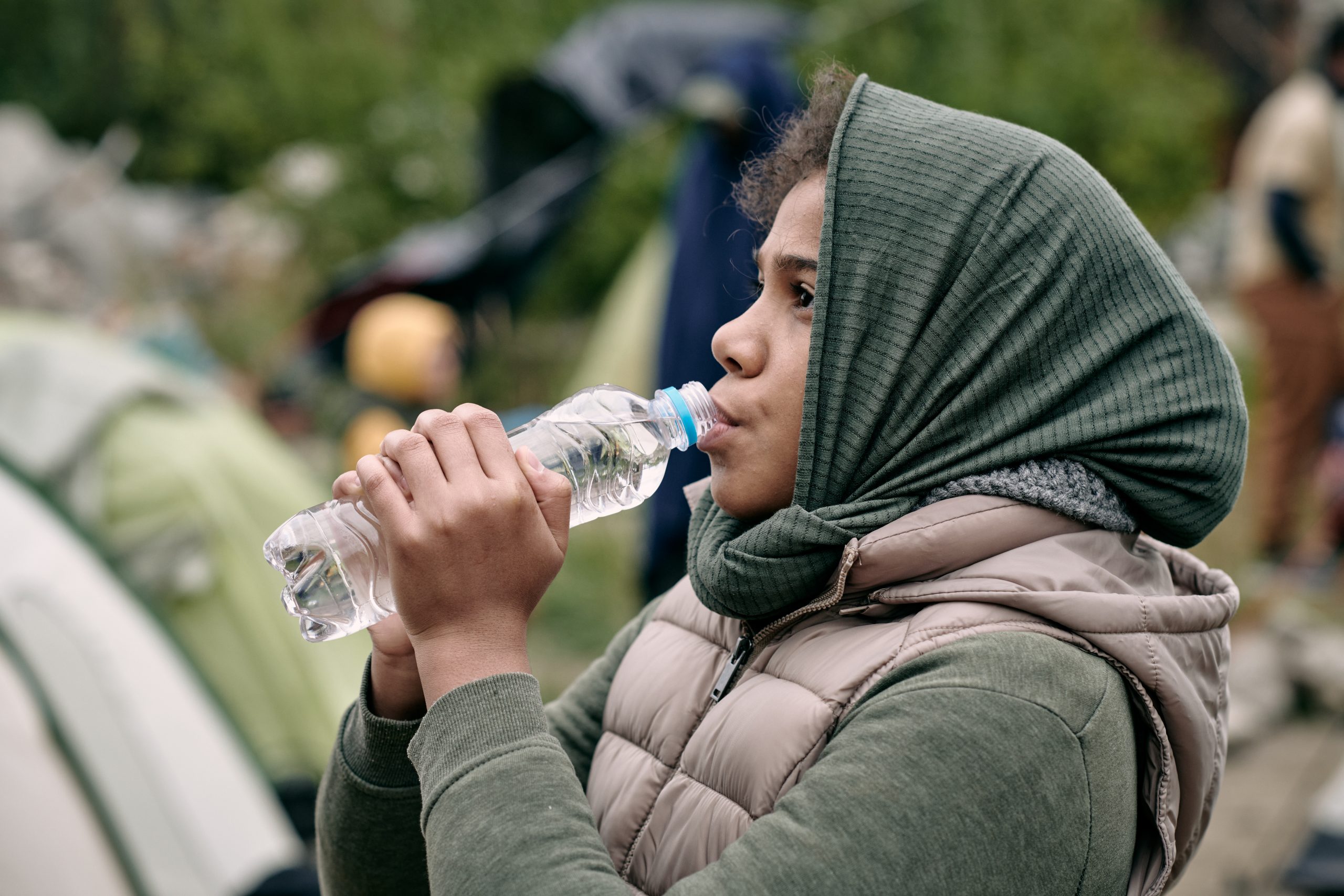ENVIRONMENT
HORN OF AFRICA – More than 7 million children under the age of 5 remain undernourished

More than seven million children under the age of five are malnourished and in need of urgent nutritional assistance, and more than 1.9 million boys and girls are at risk of dying from severe malnutrition. As the region emerges from one of the worst droughts in 40 years, vulnerable communities have lost their livestock, crops and livelihoods over the past three years of insufficient rains.
“The crisis in the Horn of Africa has been devastating for children,” said Mohamed Fall, UNICEF Regional Director for East and Southern Africa. “ Over the past three years, communities have been forced to take extreme measures to survive, with millions of children and families leaving their homes in desperation in search of food and water. This crisis has deprived children of the essentials of childhood – eating, having a home, drinking water and going to school,” he added.
Drought gives way to floods
While the rains delayed the worst, they also caused flooding as the parched soil was unable to absorb large amounts of water, resulting in further displacement, increased risk of disease, livestock losses and crop damage. In Somalia, the rains caused floods that damaged homes, farmland and roads, washed away livestock and closed schools and health facilities. Early estimates indicate that flash floods and river floods have affected at least 460,470 people, of which nearly 219,000 have been displaced, mainly in flood-prone areas, and 22 have been killed. The floods have also caused extensive destruction and displacement in several areas of Ethiopia. Floods have increased the vulnerability of populations already heavily affected by drought, as areas hardest hit by flooding and drought overlap. Floods have also exacerbated health risks, including cholera, with the current epidemic being one of the longest on record in Ethiopia. “The rains have brought some relief and hope, but also new threats, and recovery doesn’t happen overnight,” Fall said. It takes time for crops and herds to grow, for families to recover from years of hardship. That is why it is essential to continue to provide our support.”
New threats to children
Across the region, 23 million people face high levels of acute food insecurity in Ethiopia, Kenya and Somalia. The number of severely malnourished children seeking treatment in the first quarter of this year remains much higher than last year and is expected to remain high for some time to come. In addition to nutritional needs, extreme weather, insecurity and scarcity have also led to devastating consequences for women and children, increasing the risk of gender-based violence, sexual exploitation and abuse. Major epidemics of cholera, measles, malaria and other diseases are rampant throughout the region, aggravated by extreme weather conditions and weakened health systems. Food prices remain high in local markets, weighing on children and families. The climate crisis is worsening the situation, worsening mass displacement, malnutrition and disease.
The need for continued support
Mr. Fall highlighted the need for more funding. With donor support, UNICEF was able to provide malnutrition prevention services to more than 30 million children and mothers in 2022. “This year, additional flexible funding will not only help children recover from a crisis of this magnitude, but also develop more resilient and sustainable systems for children in the region. able to withstand future climate impacts and other shocks,” he said. With the extreme climate cycles we are seeing today in the Horn of Africa, the next crisis could hit before children and families have had a chance to recover,” he added.
ENVIRONMENT
LIBYA – Storm Daniel: The international community is organizing to send aid

Emergency services are trying to identify the number of victims caused by the passage of Storm Daniel, Sunday, September 10, 2023 on the east coast of the country. Torrential rains and the collapse of two dams led to the partial destruction of the city of Derna, which has a population of 100,000. The international community is organizing to provide emergency assistance.
Neighborhoods engulfed under water, dams that have broken, mudslides that take away buildings. The situation is dramatic in Libya, after the floods caused by storm Daniel last Sunday in the east of the country.
Libyan relief services under the Tripoli government, recognized by the international community, released a final human toll mid-day. According to their spokesman, Oussama Ali, the storm left at least 2,300 dead and 7,000 injured in the city of Derna alone, clearly the hardest hit.
The government of the East, rival to that of Tripoli, puts forward an even heavier record: it says that more than 5,200 people died in Derna. The Minister of Health even says he expects twice as many victims. The final toll remains very uncertain. The International Federation of Red Cross and Red Crescent Societies remains cautious on the numbers, but recognizes a «huge» death toll that can be counted in thousands. There are an estimated 10,000 missing. There are also 65 other deaths in other cities in eastern Libya.
A IFRC official talks about humanitarian needs that far exceed the capabilities of the Federation, and even the government.
ENVIRONMENT
SUSTAINABLE DEVELOPMENT GOALS – The world risks missing the Millennium Development Goals

Failure to redouble global efforts to achieve the Sustainable Development Goals (SDGs), which promise a better world for all, could fuel greater political instability, disrupting economies and causing irreversible damage to the natural environment, warns a report released Monday by the UN.
In 2015, world leaders made a historic promise to guarantee the rights and well-being of everyone on a healthy and prosperous planet when they agreed to the 2030 Agenda for Sustainable Development and its 17 SDGs.
However, according to the Report on the Sustainable Development Goals 2023, published Monday, July 10: Special Edition (The Sustainable Development Goals Report 2023: Special Edition), the combined effects of the climate crisis, the war in Ukraine, The grim global economic outlook and persistent effects of the COVID-19 pandemic have revealed systemic weaknesses and significantly hindered progress towards targets.
With only seven years left to implement the Objectives, the stakes are huge. Using the latest available data and estimates, the report presents a sobering image of the SDGs as the High-Level Political Forum on Sustainable Development kicked off on Monday and is set to run until 19 July.
The Forum, during which countries will present concrete actions to achieve the SDGs, precedes the SDG Summit scheduled for September, a decisive moment for world leaders to urgently reverse the trend and relaunch the SDGs.
SDGs are at risk
Of the approximately 140 targets that can be assessed, half have moderate or severe deviations from the desired trajectory. In addition, over 30% of these targets have not achieved any progress or, worse, a decline below the 2015 baseline.
According to the report, the effects of the COVID-19 pandemic have blocked three decades of steady progress in reducing extreme poverty, with the number of people living in extreme poverty increasing for the first time in a generation.
If current trends persist, by 2030, 575 million people will remain trapped in extreme poverty and about 84 million children and youth will still be out of school. Based on data collected in 2022 in 119 countries, 56% of countries did not have laws prohibiting direct and indirect discrimination against women. The global temperature rise has already reached 1.1°C above pre-industrial levels and is expected to reach or exceed the critical tipping point of 1.5°C by 2035.
The report also warns that while the lack of progress is universal, the poorest and most vulnerable are suffering the worst effects of these unprecedented global challenges.
Further progress is possible
But progress in some areas since 2015 illustrates the potential for further progress. The share of the world’s population with access to electricity rose from 87% in 2015 to 91% in 2021, with nearly 800 million more people connected.
The report also shows that by 2021, 133 countries had already achieved the SDG target on under-five mortality, and another 13 are expected to do so by 2030. Despite the slowdown in global industrial growth, medium-high and high-tech industries posted robust growth rates. Developing countries installed a record 268 watts per capita renewable energy capacity in 2021. In addition, the number of people using the Internet has increased by 65% since 2015, reaching 5.3 billion people worldwide in 2022.
According to the UN, these significant development gains demonstrate that a breakthrough towards a better future for all is possible through the combination of collective action and strong political will, and the effective use of technologies, available resources and knowledge. This can lift hundreds of millions of people out of poverty, improve gender equality and put the world on a path to low greenhouse gas emissions by 2030. Strengthening data collection will also be key to understanding where the world is and what needs to be done to achieve the SDGs.
ENVIRONMENT
GLOBAL WARMING – Climate shocks lead to deteriorating security conditions

With approximately 3.5 billion people living in “climate hotspots”, the risks associated with peace and security can only increase, said the UN Under-Secretary-General for Peace Operations on Tuesday, Jean-Pierre Lacroix, before the Security Council, warning that measures must be taken to avoid effects that continue to worsen.
Climate shocks are leading to deteriorating security conditions from Afghanistan to Mali, and UN peacekeeping missions are taking steps to adapt, whether it’s reducing their carbon footprint or dealing with a myriad of related consequences.
Given the increasingly close links between climate change, peace and security, as well as wider changes in the dynamics of conflict in the areas where we work, we must continue to adapt,” he said.
He said the latest assessment report of the Intergovernmental Panel on Climate Change (IPCC) shows that climate and risks such as biodiversity loss and violent conflict will increasingly interact.
At the second official meeting of the 2023 Security Council dedicated to this trend, more than 70 speakers, including former Colombian President and Nobel Laureate Juan Manuel Santos, exchanged views on the links between climate change and worsening security.
The link between climate and security
Giving an overview of current efforts, Mr. Lacroix said that in recent years, most UN peace operations have faced greater dangers and political challenges.
The link between climate and security
Giving an overview of current efforts, Mr. Lacroix said that in recent years, most UN peace operations have faced greater dangers and political challenges.
“Transboundary issues, environmental degradation and extreme weather events, amplified by climate change, are increasingly challenging our ability to implement our mandates,” he said. We are already seeing a strong correlation between member states facing fragility and those facing climate change.”
Of the 16 countries most vulnerable to climate change, nine are hosting a UN mission on the ground: Afghanistan, Central African Republic, Democratic Republic of Congo, Haiti, Mali, Somalia, Sudan, South Sudan and Yemen, said the UN Head of Peace Operations, noting that the majority of UN peace operations are deployed in contexts that are both highly exposed to climate and characterized by high levels of gender inequality.
Although UN missions on the ground do not hold the “ultimate solution” to climate change, they are “deeply” affected by its impact, Lacroix said.
Dual vulnerability
“Our missions are a direct witness to the double vulnerability posed by climate change and insecurity,” he shared, citing several examples from Mali to South Sudan.
As such, priority areas for action in UN missions on the ground include investing in the capacity to anticipate and address the links between climate and security, strengthen the mutual benefits of climate action and make environments safer, and ensure that missions do not become part of the problem, the UN official said.
“Guided by the Environmental Strategy for Peace Operations, the UN is phasing in renewable energy solutions, reducing our environmental footprint while minimizing the security risk for fuel convoys,” Lacroix said.
Renewed efforts
Noting that in 2021 and 2022, six per cent of the electricity used in UN peace operations was generated from renewable energy sources, he welcomed new initiatives such as the Nepal-United StatesUnited to deploy a large-scale hybrid solar system in Rumbek, South Sudan, and the launch by the United Arab Emirates and Norway of the Peace Energy Compact.
“The deployment of climate, peace and security capabilities in an increasing number of field missions has changed the situation,” he said. “the integration of climate considerations into their work has strengthened the capacities of missions to implement the mandates entrusted by this Council.”
Mr. Lacroix highlighted that the 2023 UN Peacekeeping Ministerial meeting in Ghana in December will provide additional opportunities to strengthen efforts by generating promises that meet needs, specialized capabilities to equip partnerships in key areas such as the environment.
Together, we can build a future where our efforts in conflict prevention, peacebuilding and peacebuilding will be strengthened and complemented by our commitment to address the climate crisis,” he said.
-

 EAST AFRICA1 year .
EAST AFRICA1 year .TANZANIA – President meets with Chairman of the Board and CEO of the Merck Foundation
-

 CHAUD TOO CHAUD3 years .
CHAUD TOO CHAUD3 years .POLITICS – [INTERVIEW EXCLUSIVE] – MADAGASCAR – Fanirisoa Ernaivo, a politician and activist committed to the rule of law and respect for democracy
-

 BUSINESS8 months .
BUSINESS8 months .GUINEA – Authorities demand repatriation of mining revenues
-

 CULTURE2 years .
CULTURE2 years .AFRICA – African writers and artists celebrate the 20th anniversary of the African Union
-

 IMMIGRATION10 months .
IMMIGRATION10 months .AFRICA – Migrant smuggling brings 59 billion CFA francs to smugglers per year
-

 POLITICS5 months .
POLITICS5 months .SENEGAL – Presidential election 2024: Registration of 79 candidates declared
-

 CULTURE3 years .
CULTURE3 years .SENEGAL – “Sadik Lady” by Viviane Chidid
-

 POLITICS3 years .
POLITICS3 years .SOUTH AFRICA – Former President Jacob Zuma in prison



